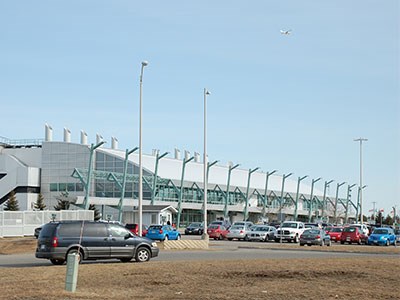Thunder Bay International Airport had a record-breaking year in 2012.
The facility posted a new record for passenger volumes with 761,300 passengers passing through the terminal, a 5.8 per cent increase from the previous year.
Scott McFadden, president and CEO of the airport authority, said having three carriers providing good service and competitive fares has had a positive impact on local air travel.
McFadden points to growth on the local health sciences side, high production at the Bombardier plant and the intense mining-related activity as all being reflected in passenger movement.
With three mainstream carriers – WestJet, Porter and Air Canada – servicing Thunder Bay, McFadden said courting new airlines and retaining existing ones is always a “full-time job.”
In mid-February, the authority is welcoming its fourth carrier, United Airlines.
The U.S. carrier begins daily jet service to Chicago's O'Hare Airport on Feb. 14.
United will offer one daily return flight straight into the air carrier’s hub at O'Hare International Airport aboard 50-seat Canadair CRJ regional jet aircraft.The airport had been courting United for years, especially after Delta Airlines dropped service between Thunder Bay and Minneapolis in 2010.
“Once you have United, Porter, Air Canada and WestJet, there really aren’t any other choices from a main line perspective in Canada,” said McFadden.
Landing United was quite a feather in the airport's cap.
“We’re one of two communities in Canada to get new trans-border service in the last year. Chicago is not just a major centre for aviation, but it's a significant economic one as well.”
Advance ticket sales are going well and McFadden is hopeful that market conditions will allow additional flights to be added.
With the arrival of United, McFadden said some modifications must be made within the terminal building to create new check-in and departure space. Last year, a third bridge (an elevated walkway to the aircraft) was added to the terminal building, which was considered a “major step forward” to the building's capacity. “With the configuration we have on the apron, we can now park nine aircraft within the radius of the three bridges.”
McFadden said they're careful not to neglect servicing their northwestern Ontario catchment area and are always on the lookout to bring air service to communities that no longer have it, or to increase flights to others.
It's commonplace to see charter flights flying in and out of Thunder Bay servicing the resource industry.
Flights run north to the remote Musselwhite Mine and charter companies like Canadian North stop twice a week in Thunder Bay picking up and dropping off workers servicing Western Canada and the Oil Patch.
“A good percentage of our total traffic either by the Canadian North charter or by scheduled carriers are people who are working out West in Saskatchewan or Alberta, and commuting in and out in a two-week or three-week cycle.”
The authority also acts as administrator of a very profitable Red Lake airport and McFadden said they have expressed an interest to the Ontario government, First Nations and the mining companies in being involved in the development of the Ring of Fire.
“We certainly see the opportunity for an experienced airport operator, particularly a not-for-profit operator, filling a need on an independent basis. But so far, we’ve only talked.”
Since arriving 15 years ago McFadden said the authority has promoted the airport and the community as a place to expand or relocate your business to.
“We've had some success over the evolution of the airport. Our cost structure is significantly less than other airports in Canada and we have put in place our community improvement zone that offers some world class incentives for aviation-related communities to locate at the airport.
“Thunder Bay is still perceived as a remote community for those who have not experienced the place. So it's an uphill battle to get over the initial perceptions within and outside the aviation community.”
The airport already is home to a mineral assay lab, Lakehead University's flight training school and the Pilatus Centre Canada maintenance hangar, but McFadden would like to invite more interest from the aviation sector to look at Thunder bay as support centre for turbo prop maintenance, flight training, airframe and avionics support.




